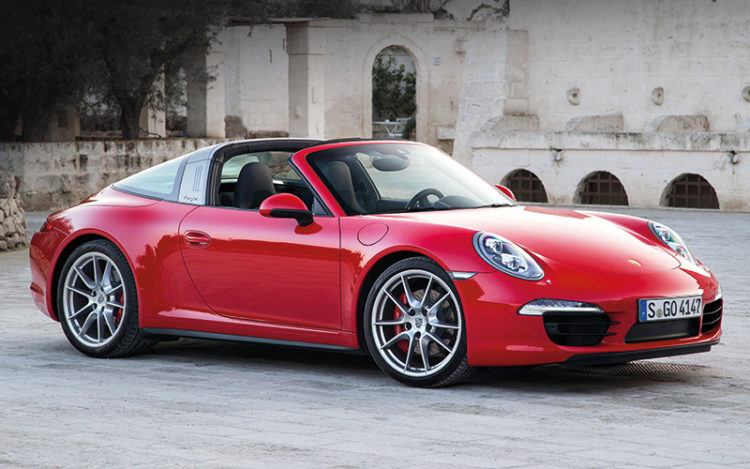 The story of the 911 Targa semi-convertible began in the late 1960s, as a hedge against the possibility that full-fledged soft-top cars would be banned from sale in the US. The career of automobile safety activist Ralph Nader was gathering pace at the time, and his landmark publication, Unsafe At Any Speed, slammed convertibles for being terribly dangerous, especially in the event of a roll-over.
The story of the 911 Targa semi-convertible began in the late 1960s, as a hedge against the possibility that full-fledged soft-top cars would be banned from sale in the US. The career of automobile safety activist Ralph Nader was gathering pace at the time, and his landmark publication, Unsafe At Any Speed, slammed convertibles for being terribly dangerous, especially in the event of a roll-over.
This, naturally, got Porsche a little worried, because the US was (and remains) a key market. So, the German carmaker worked feverishly to make a “safer” open-top 911 – it did so by taking a 911 Cabriolet and welding a “hoop” to where the B-pillars would be, as a safety measure in case of a roll-over. By happy coincidence, the roll-over bar also looked good, so Porsche made it a design feature, and deliberately left the stainless steel structure unpainted.
 The convertible “apocalypse” in the US didn’t come to pass, but still, the 911 Targa (which made its debut in 1967) continued to be sold alongside the 911 Cabriolet. A major redesign for the Targa came in 1996, when the 993-generation model ditched the iconic B-pillar hoop for a full-length glass roof, something that would persist for the next two model generations.
The convertible “apocalypse” in the US didn’t come to pass, but still, the 911 Targa (which made its debut in 1967) continued to be sold alongside the 911 Cabriolet. A major redesign for the Targa came in 1996, when the 993-generation model ditched the iconic B-pillar hoop for a full-length glass roof, something that would persist for the next two model generations.
Now, Porsche has resurrected the original roof configuration (along with its distinctive appearance) for the current 991-series 911, ostensibly to better differentiate it from the coupe, which already has a panoramic glass roof option. The reborn Targa also broadens today’s 911 model range.
 Unlike the original roof, which requires manual labour to stow or deploy, the new car employs an adaptation of the electric mechanism used on the Cabriolet. Also unlike the original is the middle section of the latest Targa top, which is made from fabric instead of hard metal. Best of all, its roof folds away in a flourish of over-engineered mechanical drama – its rear deck opens up (with wraparound rear windscreen in tow) to “swallow” the fabric roof in 20 seconds.
Unlike the original roof, which requires manual labour to stow or deploy, the new car employs an adaptation of the electric mechanism used on the Cabriolet. Also unlike the original is the middle section of the latest Targa top, which is made from fabric instead of hard metal. Best of all, its roof folds away in a flourish of over-engineered mechanical drama – its rear deck opens up (with wraparound rear windscreen in tow) to “swallow” the fabric roof in 20 seconds.
The bad news is, while the Cabriolet can perform this “ballet” at speeds of up to 50km/h, the Targa needs to be completely stationary while doing so, because when the roof tips downwards, it partially blocks the tail-lights and thus contravenes European Union safety regulations for “on-the-move” convertible operations. Bad news, too, is the extra 160kg in weight compared to the equivalent-engined 911 coupe.

Unpainted B-pillar “hoop” is a throwback to the original Targa from 1967.
That said, the new 911 Targa, even in its most basic guise equipped with a 350bhp 3.4-litre flat-6, could hardly be called tardy – it completes the century sprint in 4.8 seconds. The range-topping Targa 4S, with its 400bhp 3.8-litre flat-6, does the zero-to-100km/h dash in 4.4 seconds.












